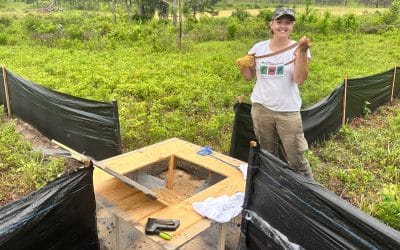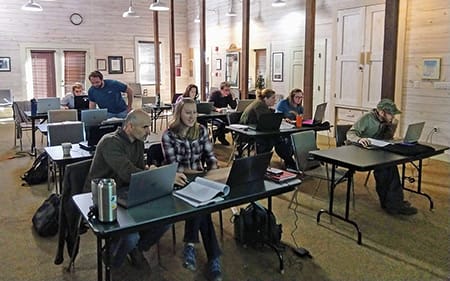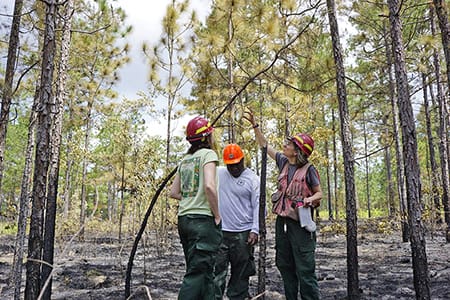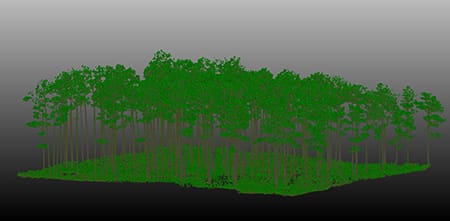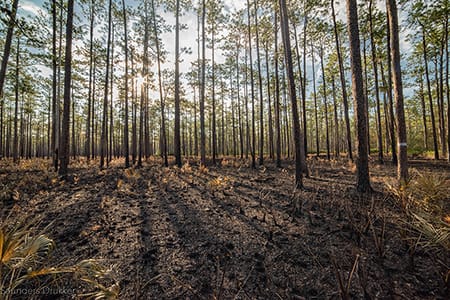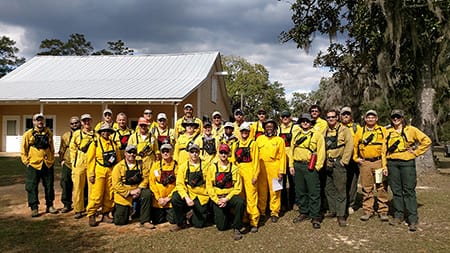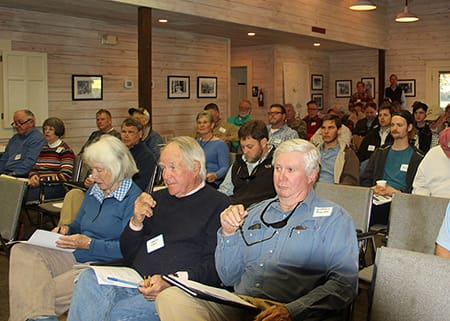The Fire Ecology lab is collaborating with U.S. Forest Service entomologist Dr. Michael Ulyshen on a new study at Tall Timbers on how bees utlilize tree resources. The study seeks to learn from which plants bees are eating pollen in different locations, including close to the ground and high in the tree canopies and between frequently burned upland pine and beech-magnolia bottomland communities.

Dr. Michael Ulyshen checking on a trap suspended high in a tree in Woodyard
Hammock beech-magnolia forest on Tall Timbers, with the paired lower trap in hand.
The Fire Ecology Lab will collect the bees from traps in pairs, one near the ground the other suspended from high tree branches. He will use a DNA procedure called meta-barcoding to analyze the gut content of the bees and determine the pollen sources.
The research promises to provide exciting insights into areas of bee ecology never before studied. Recent research from the U.S. and Europe suggests that trees may be more important to bees than previously realized. This study will determine if bees are searching for pollen in tree canopies, and if those bees are different than the ones searching near the ground.
It will also be the first to make a comparison between nearby upland pine communities and mature bottomland communities. He is particularly interested in whether southern magnolia, holly, and sourwood are important pollen sources in early summer. The study will run from February to June, to cover the flowering period of the most of the potential tree sources.







